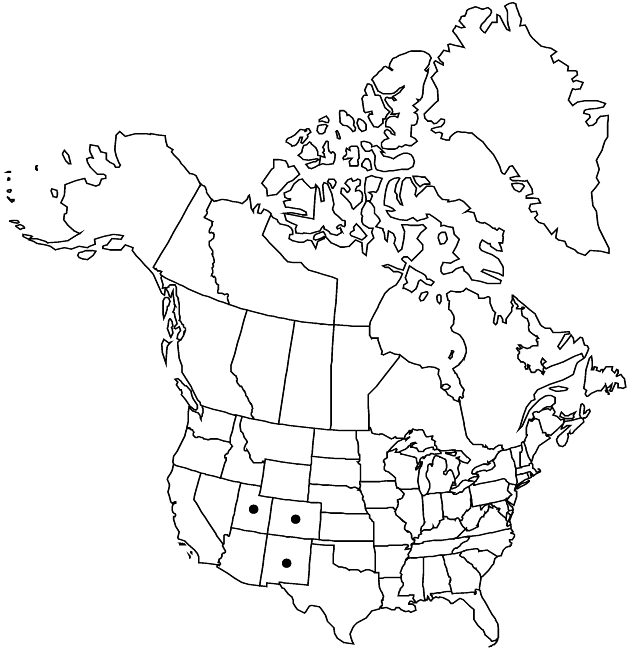Cirsium eatonii var. eriocephalum
Sida 21: 1645. 2005.
Common names: Mountain or alpine thistle
Basionym: Cnicus eriocephalus A. Gray Proc. Amer. Acad. Arts 10: 46. 1874,
Synonyms: Carduus hookerianus var. eriocephalus (A. Gray) A. Nelson Cirsium scopulorum (Greene) Cockerell ex Daniels
Revision as of 20:15, 16 December 2019 by FNA>Volume Importer
Stems erect or ascending, 30–150 cm. Leaf faces thinly to densely arachnoid-tomentose, especially abaxially, and villous or tomentose with septate trichomes, especially along midveins, adaxially ± glabrate. Heads sessile or short-pedunculate in usually nodding, densely woolly-tomentose, spiciform or racemiform arrays. Involucres 2.5–3.5 cm, densely tomentose with septate trichomes (individual phyllaries obscured by tomentum). Phyllaries: outer with stiff lateral spines; apical spines slender. Corollas yellow (northern populations) or pink to pale purple (southern populations), 13–18 mm, tubes 6–9 mm, throats 3–5.5 mm, lobes 3–7 mm. Pappi 10–15 mm. 2n = 34 (as C. scopulorum).
Phenology: Flowering summer (Jul–Sep).
Habitat: Forest openings, alpine and subalpine meadows, windswept alpine ridges
Elevation: 2200–3800 m
Distribution

Colo., N.Mex., Utah.
Discussion
Selected References
None.
Lower Taxa
None.